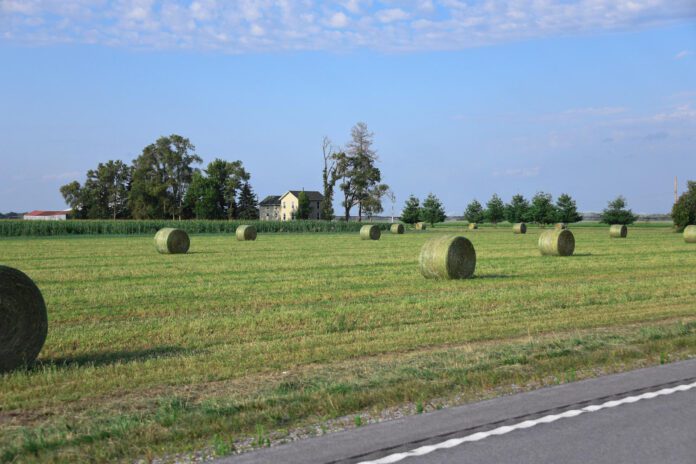STOCKTON, Mo. — “As hay season continues, I see a lot of large round hay bales being stored outside,” says Patrick Davis MU Extension Livestock Field Specialist. If hay is not stored properly outside farmers can see significant dry matter and quality losses. Factors that contribute to these losses include:
- Hay moisture at baling time
- Amount of weather during the storage period
- Soil drainage where bales are stored
- Space between the bales
- Type of hay (grass or grass-legume)
- Skill of the operator making the bales
Davis will discuss proper outside round bale storage techniques to minimize losses.
“When baling hay make sure to develop a tight, dense bale at the correct moisture,” says Davis. Large round bales should be baled at less than 18% moisture. Baling at a higher moisture content can lead to excessive heating, which reduces hay quality and is a potential fire hazard. Furthermore, bales should be baled tight with high density to reduce sag during outside storage. If bales sag that increases spoilage and bale losses. Overall baling bales at the correct density and moisture level should reduce losses and promote optimum hay feeding efficiency.
“Select a well-drained area when storing bales outside,” says Davis. Furthermore, hay should be stored in open sunlight away from trees and other shaded areas. If possible, store bales on gravel, wood pallets, wood poles, or other materials to reduce ground contact. This allows the hay to remain as dry as possible cutting down on spoilage and losses.
“Proper bale placement outside also cuts down on storage losses,” says Davis. When placing large round bales in rows they should be as even in size and pushed together end to end as tight as possible. Bale rows should be in the direction of the prevailing wind and a minimum of 3 feet apart. These tips allow for proper wind circulation during storage which helps reduce spoilage and hay losses.
“Hay is a major feed resource for cattle operations,” says Davis. Storage that reduces losses will promote optimum hay feeding efficiency, leading to optimum cattle operation profitability. For more information on reducing hay storage losses look at MU Extension guide sheet G4575 “Making and Storing Quality Hay” and visit with your local MU Extension Livestock and Agronomy Field Specialist.


















